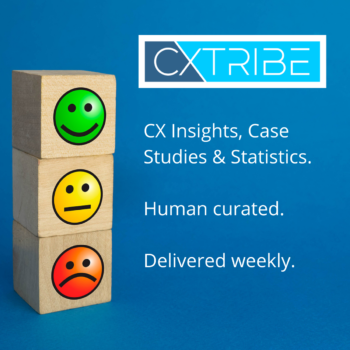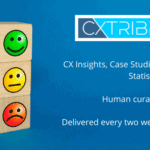CX Tribe is the best Customer Experience insights, case studies and statistics. Human curated. Delivered weekly. Join more than 5,000 other CX Professionals and subscribe.
[Research – Practical Implications]
Escalation of Loyalty and the Decreasing Impact of Perceived Value and Satisfaction over Time [Link]
This research reviews what drives loyalty for e-commerce customers but has implications for other industries.
There are two important findings:
- Customers become more loyal the more they buy from you. (Yes this does seem somewhat of a tautology).
- The link between [satisfaction and value for money] and loyalty decreases over time, i.e. both matter less in time and (my interpretation) habit seems a stronger driver of loyalty.
They also identify three distinct customer types segments:
- Long term relationship driven, variety seeker – repeat buyers
- Relationship neutral, value seeker – first time buyers
- Relationship averse, satisfaction seeker – first time buyers
To summarize (perhaps grossly oversimplify) this 16 page paper:
Customers are likely to start buying from you due to your level of value, stay for a while if you continue to provide reasonable value and satisfaction but will eventually leave to start the process again at another vendor no matter what your level value or satisfaction.
I’d say, that has the ring of truth to it.
[CX Tools: Kano Analysis ]
United Airlines Commits to Seatback IFE Screens in Record Airbus, Boeing Jet Order – Aviation Today [Link]
United Airlines provides a very nice example of practical Kano Analysis.
Kano Analysis is a way of classifying product and service attributes into the three key types: Hygiene, Performance and Excitement Attributes.
United Airlines will be putting in-flight-entertainment systems (IFEs, seatback TV’s to you and me) in their purchase of 270 planes because:
“our NPS scores are off the chart when we offer this type of product…Everything about the experience of flying on an aircraft with seatback TV is better. The food is better on our aircraft with seatback TVs, literally, the food is better [due to the halo effect]”
You can bet those IFEs cost more upfront and in fuel to fly around. But as an Excitement attribute they are worth it in terms of loyalty, and, I’m guessing, the slightly higher seat price they can charge for planes with an IFE system.
If you’ve never heard of a Kano Analysis, maybe read up about it and include it in your CX tool kit.
[Best Practices]
10 Leading Indicators of Horrible CX… and How to Fix [Link]
A great list of hidden indicators by Dave Fish looking under the hood of CX to the core of culture.
Check-out the list and check-off your own company performance.
[Reviews]
What Happens When Companies Pay Customers to Write Reviews? [Link]
Most people read on-lines reviews before making a purchase, which makes getting them and getting good ones an important part of any CX process.
In this HBR article Kaitlin Woolley and Marissa Sharif review their research into what happens when you provide people incentives to write reviews for you.
The results are interesting, but perhaps not surprising:
“Simply knowing you’ll receive a reward for writing a review makes the process more enjoyable, which makes you more likely to write a positive review.”
That uplift was substantial, “40% more positive language” and ”increased positive language by 55%” vs those not offered an incentive.
Google knows this and so offering incentives for reviews can get you penalised. Other platforms have similar rules.
There are other ways to generate reviews from your customer feedback program though – maybe try them instead.

